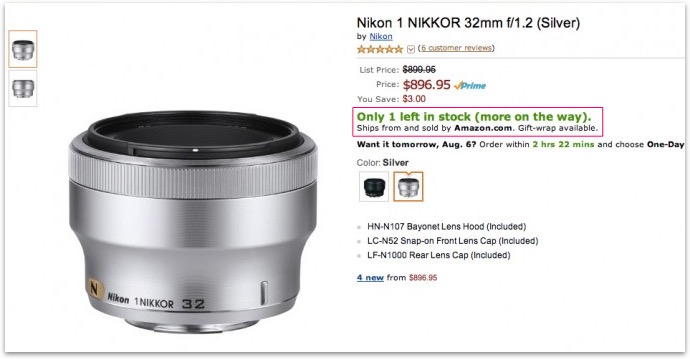6 Psychological Triggers That Will Double Your eCommerce Conversions
Online marketing is changing every day. Between Google updating their algorithm and competitors outranking you for your keywords, there’s more than enough to keep any online business owner occupied and you need more than just keywords to increase your ecommerce conversions.
But there’s one thing that never changes:
Why we do what we do.
In today’s fast-paced world, understanding consumer psychology, and, more specifically, your potential buyer, is more than a nicety if you want to get noticed; it’s a prerequisite.
In this article, I’m going to show you six psychological triggers you can use in your marketing that will increase your eCommerce conversions, reduce churn, and promote brand loyalty.
Let’s get started.
1. Social proof
Facebook ‘Likes’, comments, reviews, testimonials…
What do they have in common?
They’re all examples of social proof.
Popularized by Robert Cialdini in his seminal book, Influence, social proof is a means we use to determine what other people like us are doing.
Moreover, this trigger applies especially to the way we decide what constitutes correct behavior.
In other words, if everyone is, say, signing up for a service, it’s easier to rationalize, “Maybe I should, too?”
Shopify are a perfect illustration of this. Not only do they mention how many customers they have; they include how much revenue their customers have generated from using their service:
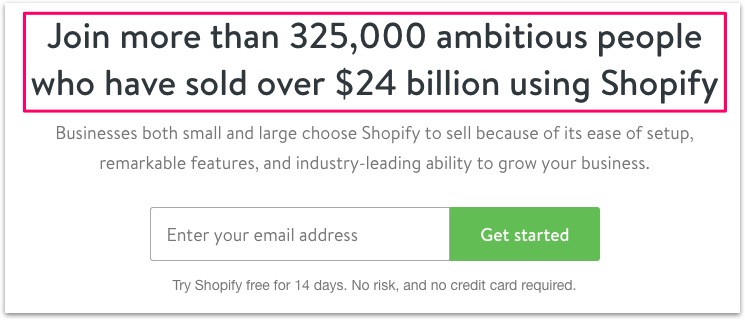
Takeaways: Turn existing customers into evangelists for your business by include testimonials on your home and checkout page (pro tip: use specific numbers in your headline when possible).
2. Authority
It’s no secret social proof is a powerful conversion trigger in marketing. But there’s another that amplifies it further:
The principle of authority.
This principle refers to our tendency to obey authority figures.
In everyday life, for instance, you might be inclined to follow advice if it’s given by someone with letters before their name (like a doctor) rather than, say, a stranger.
Online, though, is a little different…
Generally, authority is built through the testimonials of other authorities.
In other words, it’s not what you say about yourself. Rather, it’s what other authorities say about you.
Take Fifty Three, for example, a company that makes digital styluses for iPads.
Using testimonials from other online authorities like Wired, Fast Company, and Mashable, they’re able to differentiate their product from their competitors’, and position themselves as a leader in their market:
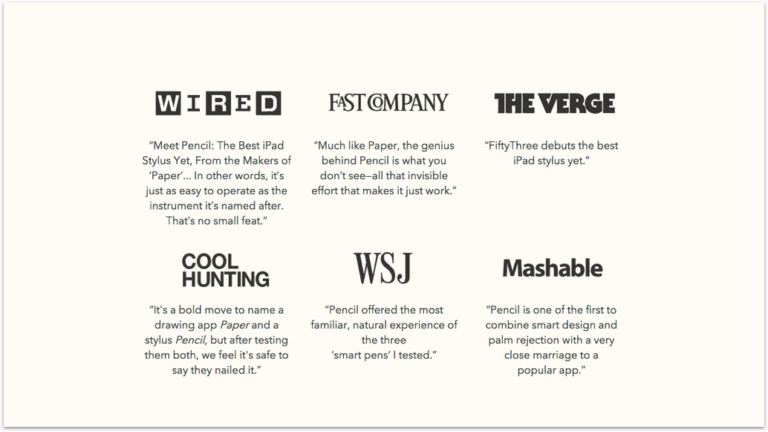
But what if you haven’t been featured in any major media outlets?
Don’t worry, few have.
If you’re new to eCommerce, try peppering a few power words into your copy. Words like “free,” “now,” and “join” do more than just evoke emotion in your readers; they nudge customers to take the desired action (e.g. make a purchase).
Naturebox uses power words like “free” and “gift” in their pop-ups to gain new subscribers:
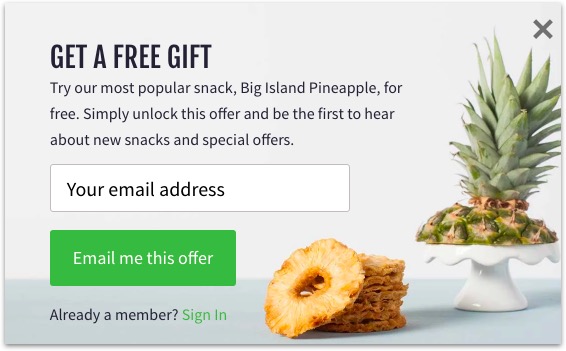
Takeaways. Put authority badges on important pages on your site and always instruct your potential buyers what to do next using power words.
3. The decoy effect
Imagine for a moment you’re shopping for a magazine subscription.
You arrive at the pricing page and are presented with two pricing options: a one-year subscription to the online edition for $59, or a one-year subscription to the print and online edition for $125.
Which would you choose?
Most people, when asked, opt for the former. In fact, when behavioral economist Dan Ariely surveyed 100 MIT students, 68 chose the online edition.
But here’s where it gets interesting…
When Ariely introduced a third option—a one-year subscription to only the print edition for $125—the results were remarkable:
Eighty-four participants chose the print and online edition (compared to 32 in the control group).
Why?
Because we tend to focus on the relative advantage of one thing over another and estimate value accordingly.
In other words, when you introduce a third pricing option—known in psychology as “the decoy”—it nudges potential buyers to choose the more expensive option.
It’s no surprise, then, many online stores use tiered pricing (in fact, here at Sleeknote, we use four tiers on our pricing page).
Harry’s, an online store that specialized in male grooming products, include a more expensive “Family Plan” optin to soften the cost of their “Blade & 1 Gel Plan.”
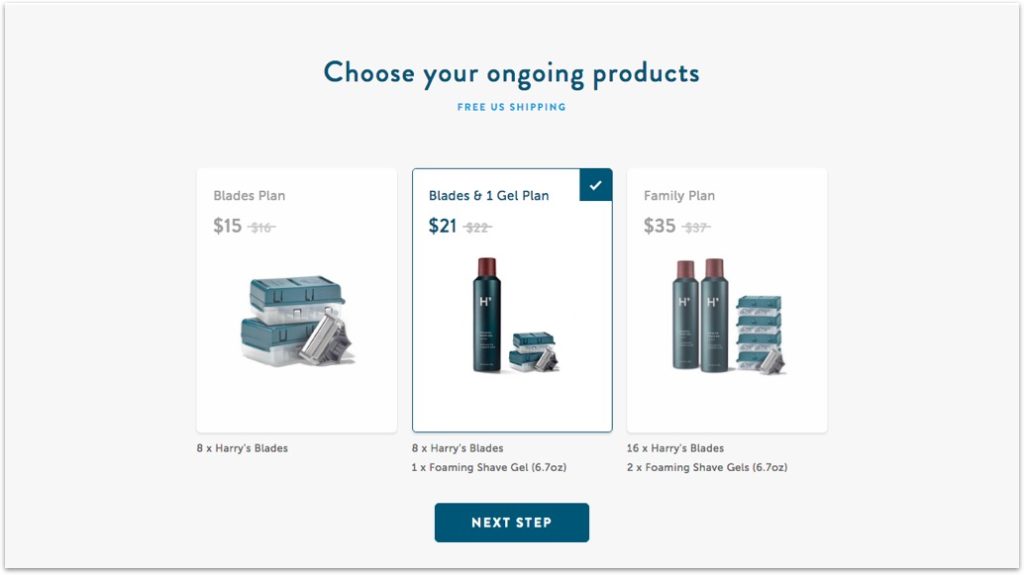
Takeaways: Introduce a third pricing option on your pricing page to improve your bottom line.
4. The framing effect
In 1981, Amos Tversky and Daniel Kahneman investigated how different phrasing affected participants’ responses to a choice in a hypothetical life and death situation (Source: Science).
Participants were asked to choose between two treatments for 600 people affected by a deadly disease. This choice was then presented to participants either with positive or negative framing:
- If Program A is adopted, 200 people will be saved.
- If Program B is adopted, there is 113 probability that 600 people will be saved, and 213 probability that no people will be saved.
Guess what happened?
Program A was chosen by 72% of participants when it was presented with positive framing.
Outcomes like the above are because of what’s known as the framing effect: our tendency to react to a particular choice in different ways depending on how it is presented (e.g. as a loss or as a gain).
One of the best pages to use the framing effect?
Your pricing page.
Take a look at the pricing page for One Pager. What do you notice?
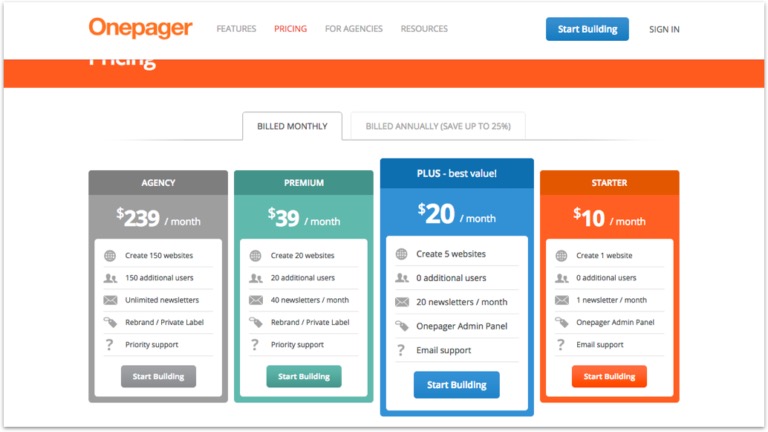
Apart from using tiered-pricing (and the decoy effect), they give potential buyers the option of paying monthly or annually. But what’s more interesting is how they frame their annual option:
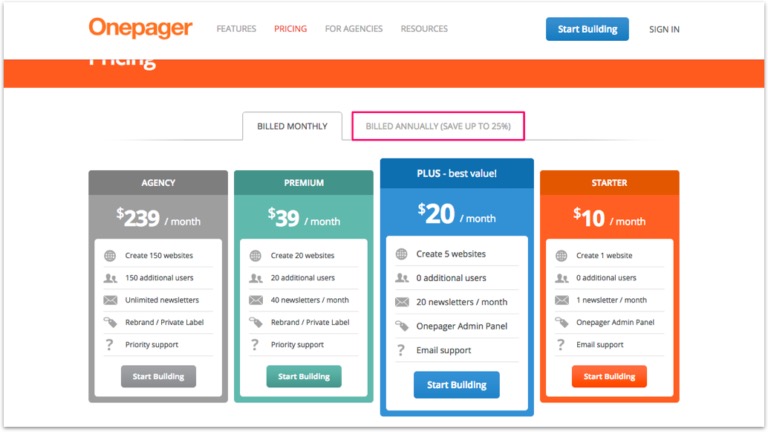
The copy frames the offer in a positive way: “Save up to 25%.”
Sometimes, all that’s needed to turn you into a customer is a gentle reminder of the bargain you’re getting.
Takeaway: Frame your pricing page copy positively by reminding your prospective buyers the additional benefits they’re going to receive when they buy.
[Tweet ” .@sleeknotecom reveal 6 psychological triggers to boost #conversions on #ecommerce”]
5. Loss aversion
This phenomenon describes our tendency to prefer avoiding losses to acquiring gains.
It’s why final reminder emails convert like crazy, countdown timers nudge us into taking action, and most commonly, offering free trials get more signups:
Once you’ve tried a product and it’s become your new “normal”, it’s harder to give up and easier to rationalize continuing.
Loss aversion is one of the most powerful conversion triggers in marketing because they are multiple ways to implement it.
Sockbox, for instance, creates urgency by having a countdown timer on their homepage to catch last-minute buyers:
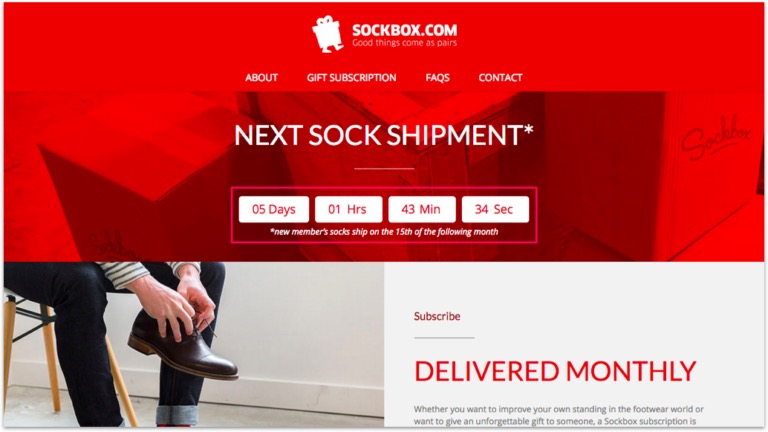
Amazon, on the other hand, displaying items are left in stock:
The goal, of course, isn’t to be dishonest (fake urgency will hurt your brand and betray trust with your customers). Rather, it’s to give your potential buyers all the information they need to make the right decision.
Takeaways. Always remind your prospect what they’re going to miss out on if they don’t act now.
6. The mere-exposure effect
Have you ever viewed a product online only to notice it on other sites later?
If you have, it’s because you’ve been retargeted.
With cart abandonment continuing to plague online stores, remarketing gives owners a chance to close potential buyers who need further persuading…
And it’s highly effective.
In fact, according to research by Wishpond, website visitors who are retargeted with display ads are 70% more likely to convert on your website.
One reason why remarketing is effective is because of a phenomenon known as the mere-exposure effect: our tendency to develop a preference for things we’re familiar with.
For example, in one study, participants who were repeatedly shown Chinese characters were more likely to give them a positive meaning than those who were only shown them a few times.
Similarly, when we are reintroduced to a product over and over again—especially one we’d previously shown interest in—we’re more likely to buy it.
Takeaway. Use Facebook retargeting to remarket to buyers who were once interested in your product and need further coaxing.
Conclusion to ecommerce conversions
Each of the principles outlined above will make a noticeable difference to your conversions.
But to get above-average results, you need to combine as many as you can.
Be responsible and always remember to look after what matters most: your customers.
Which principles are you using on your site?

